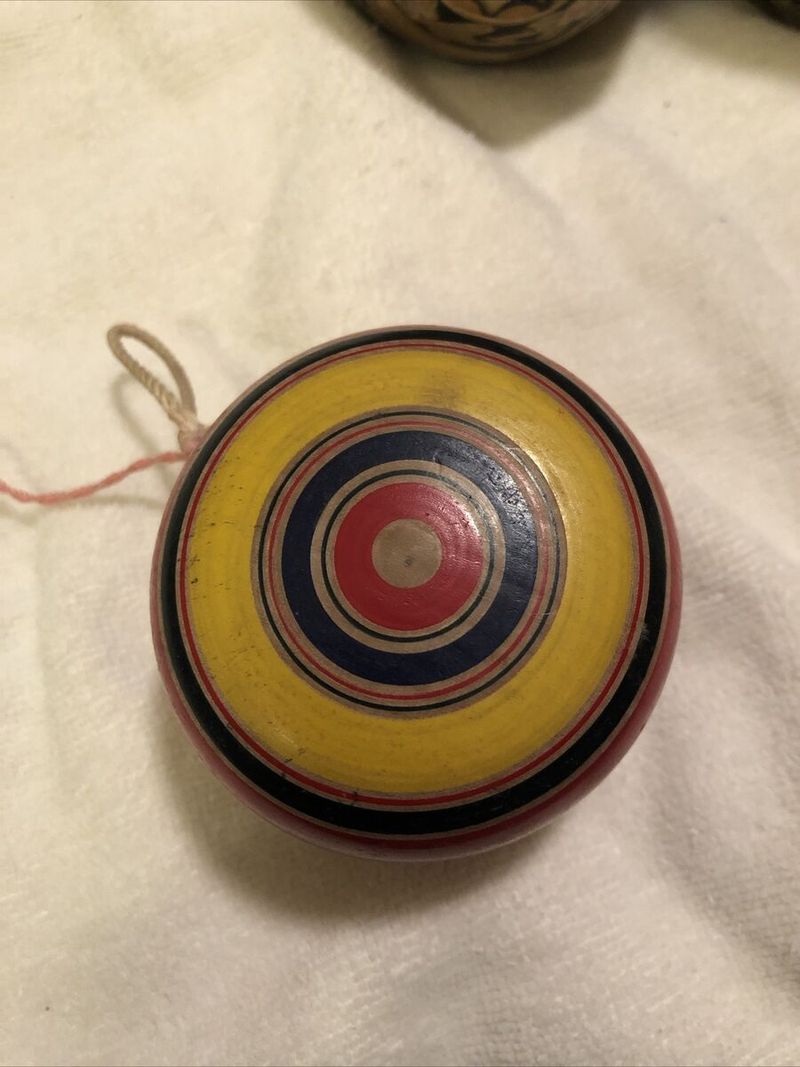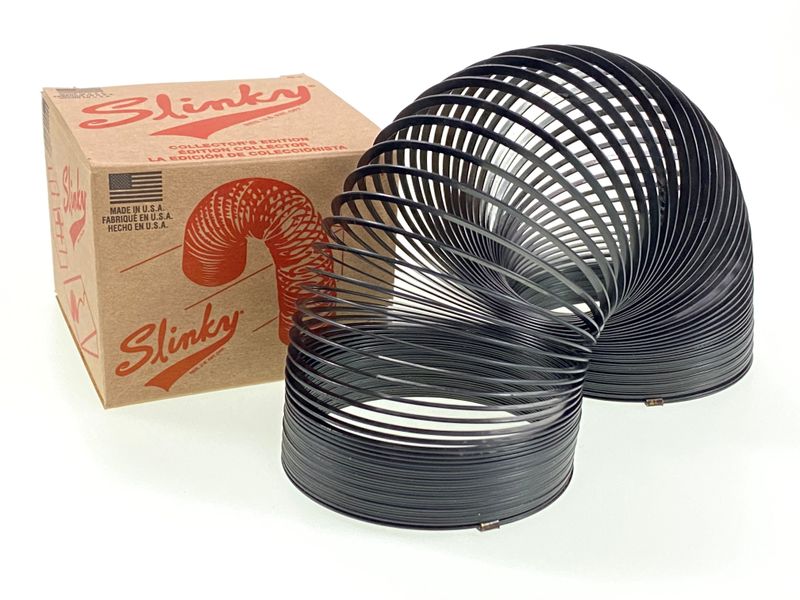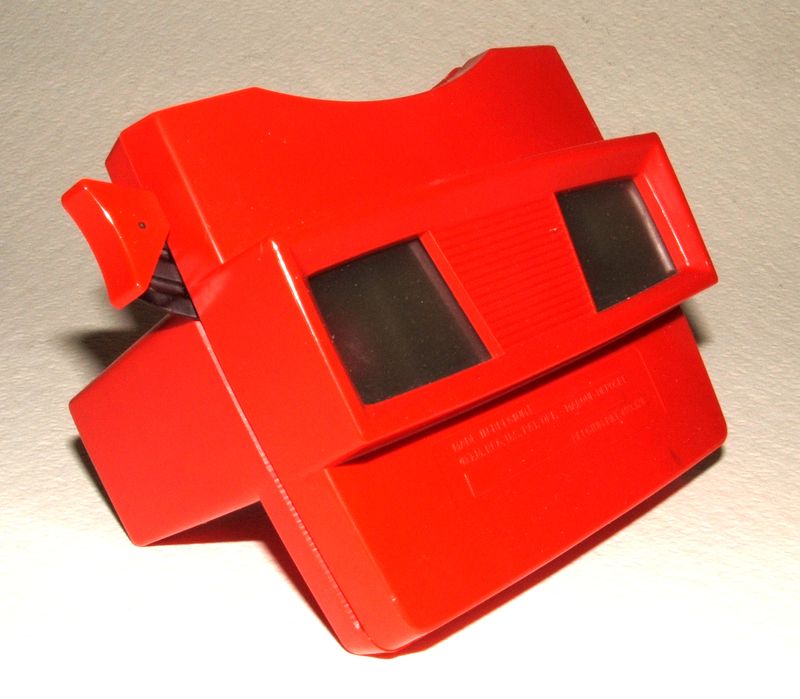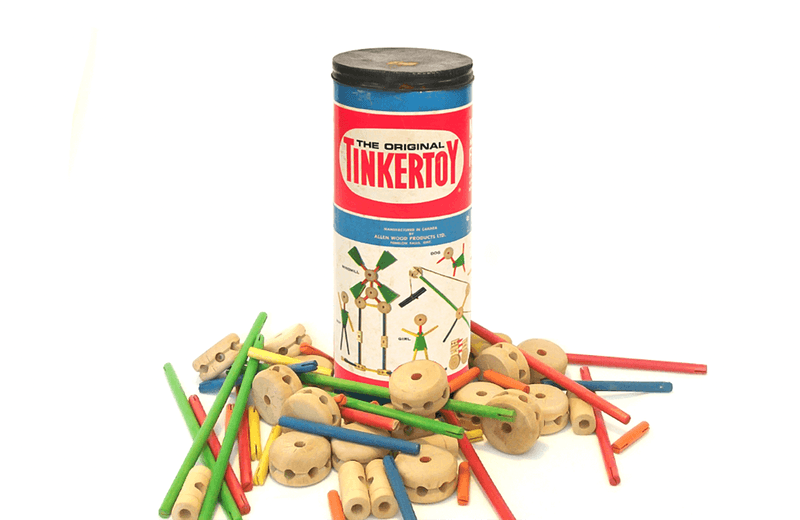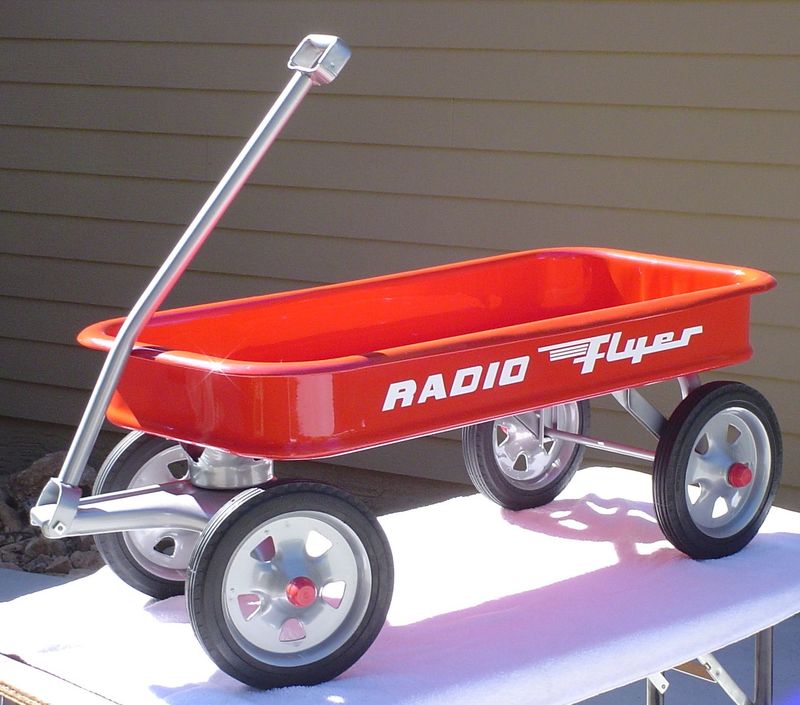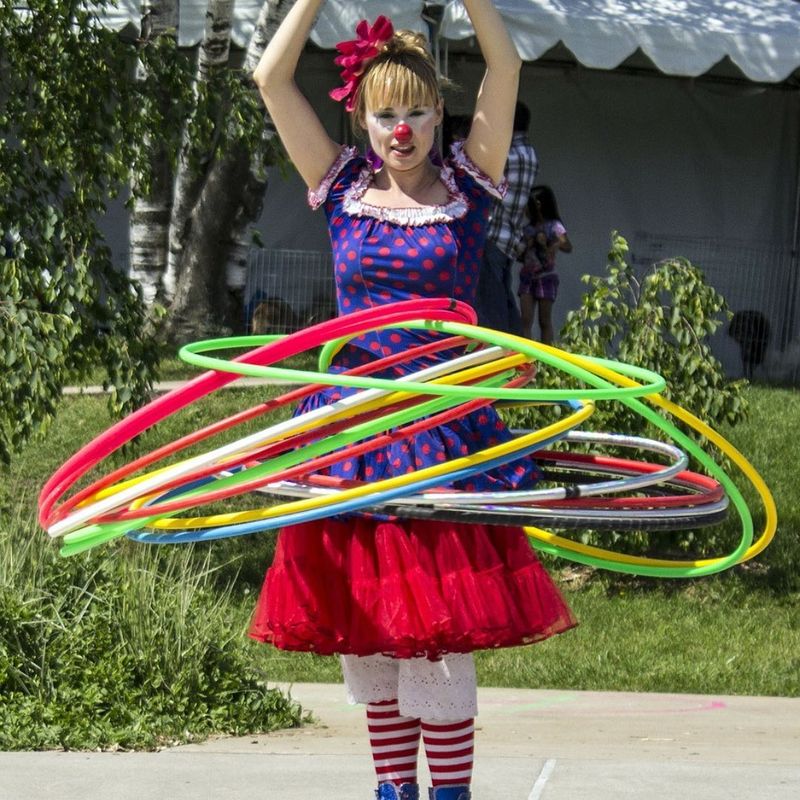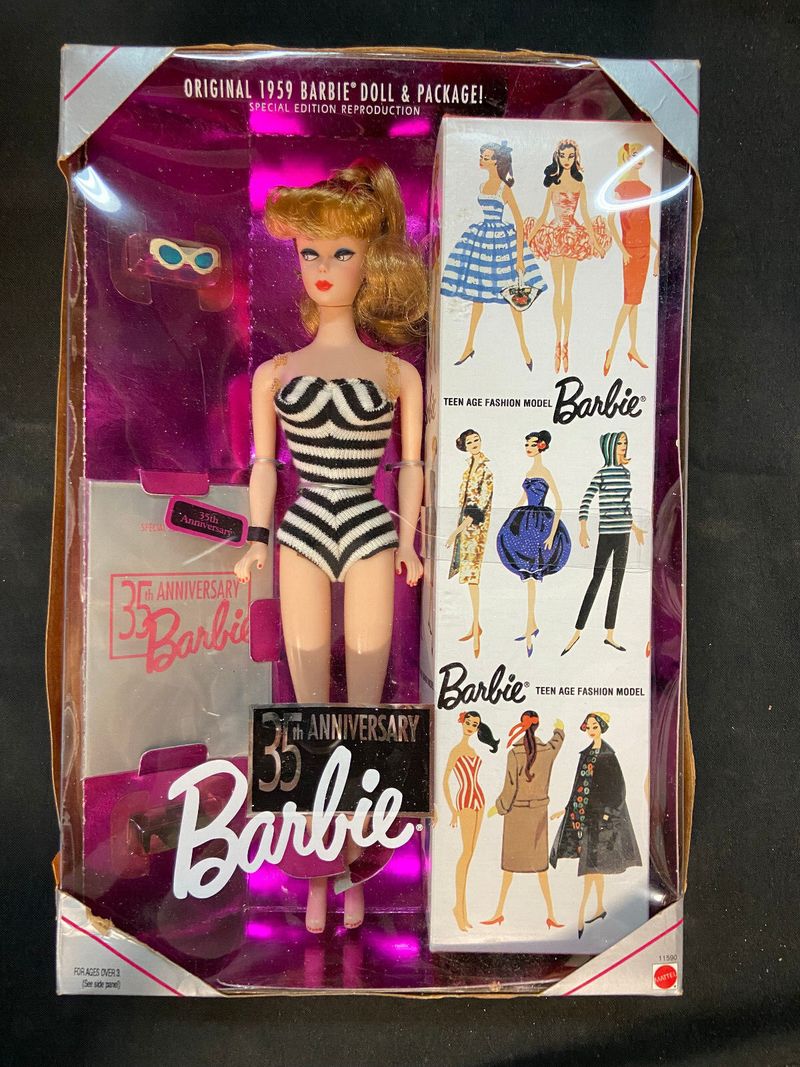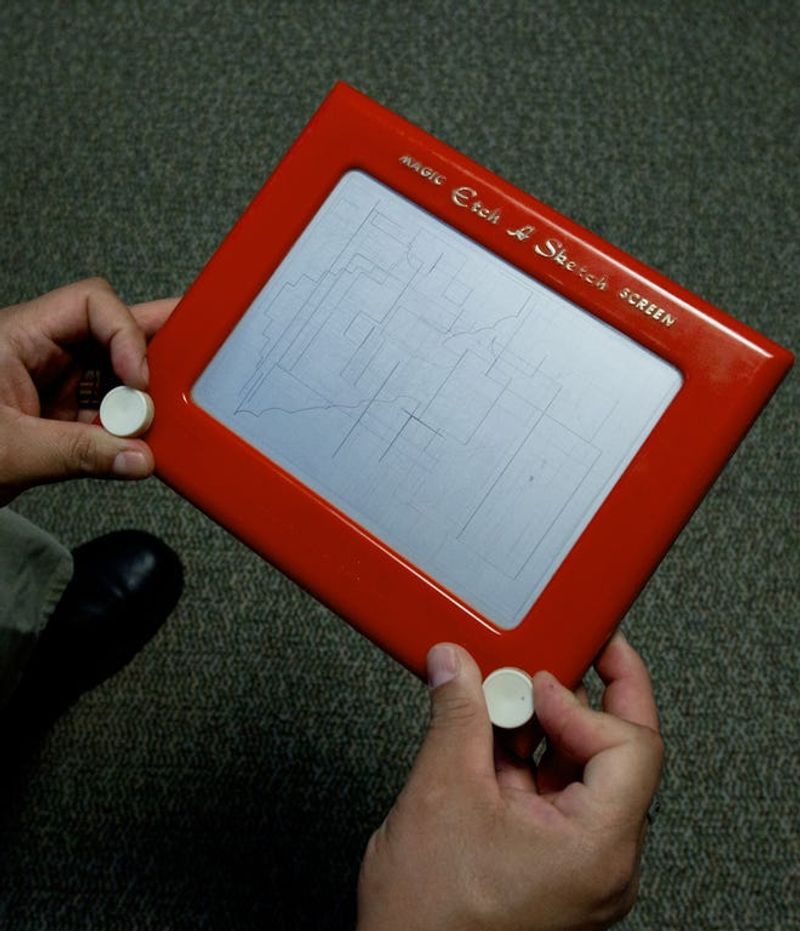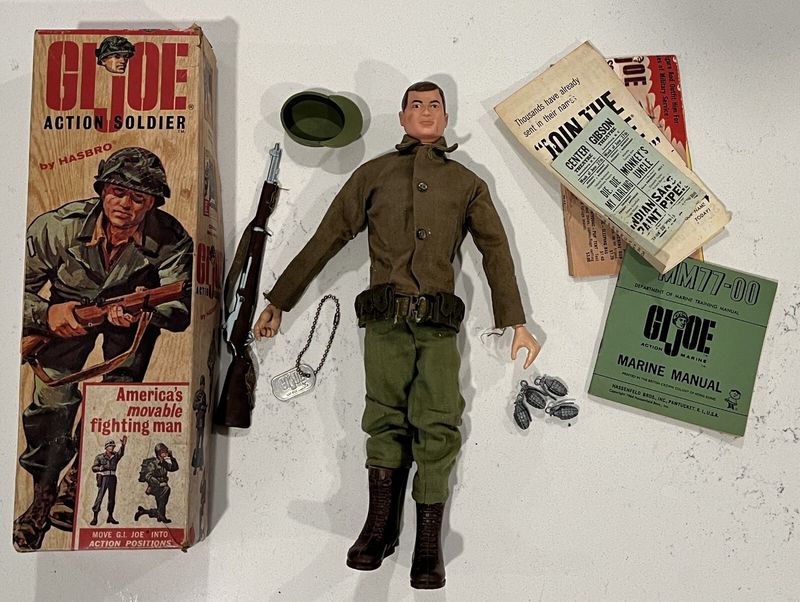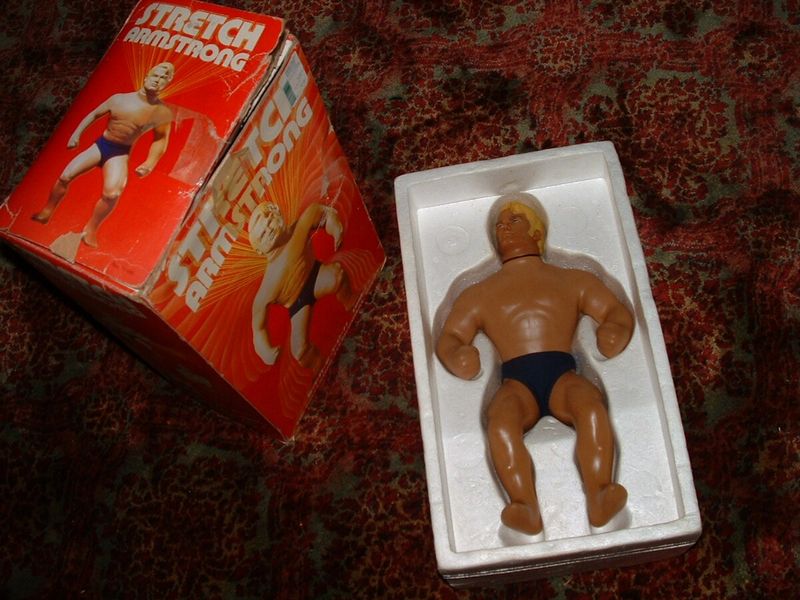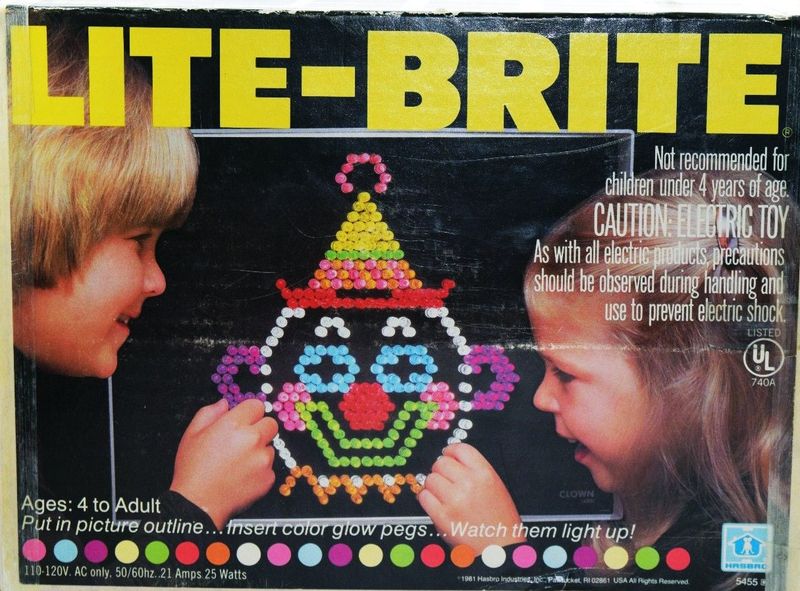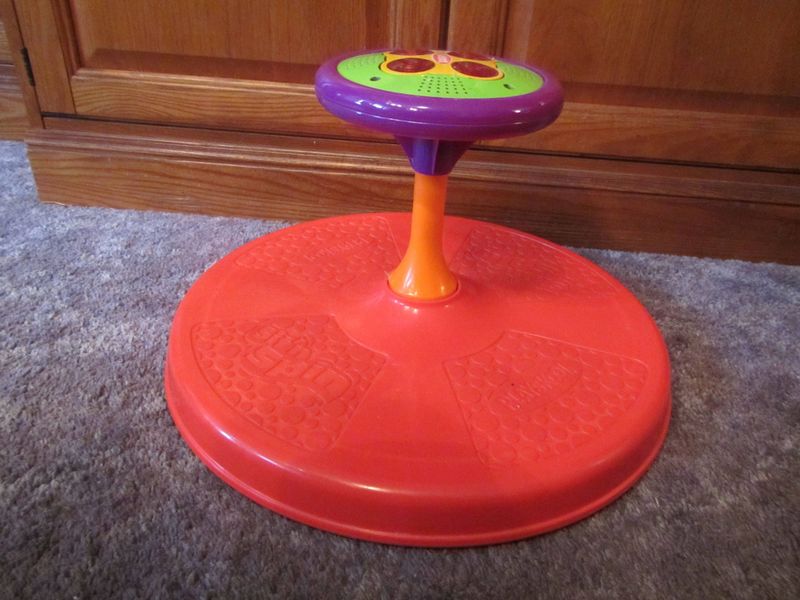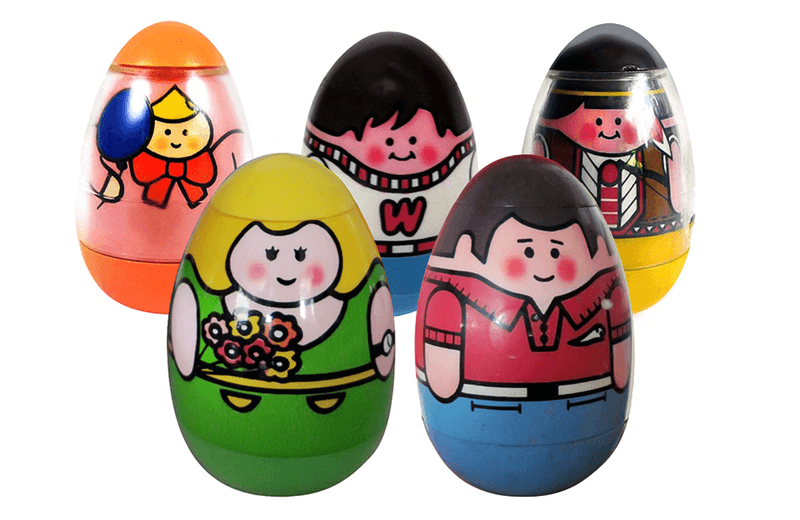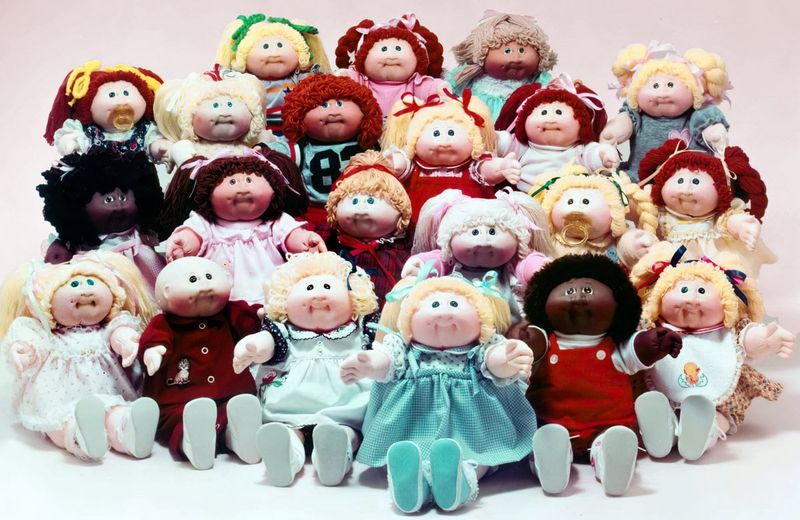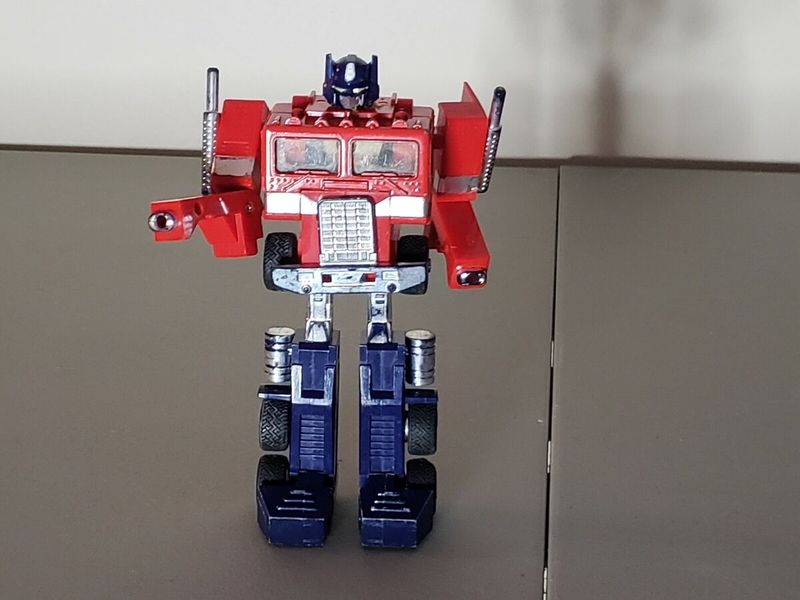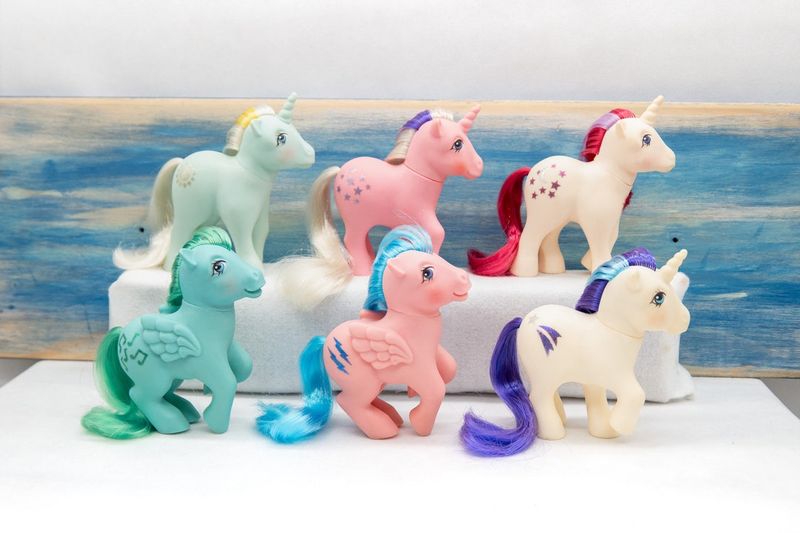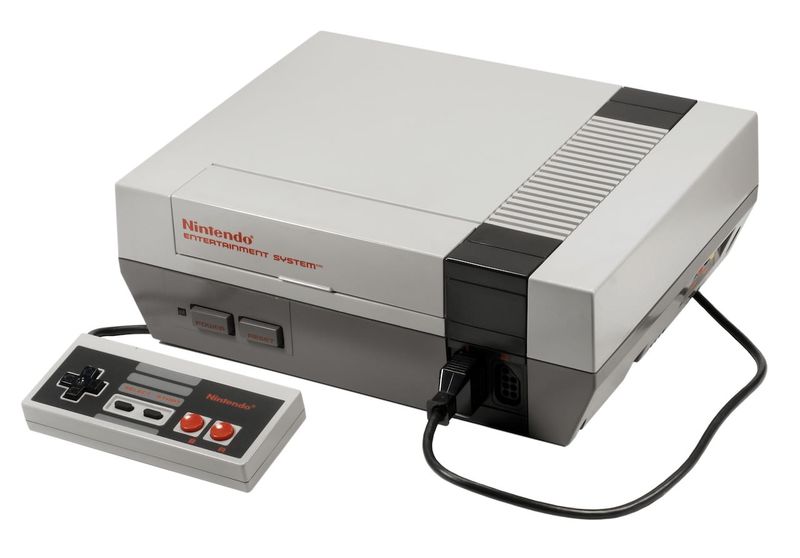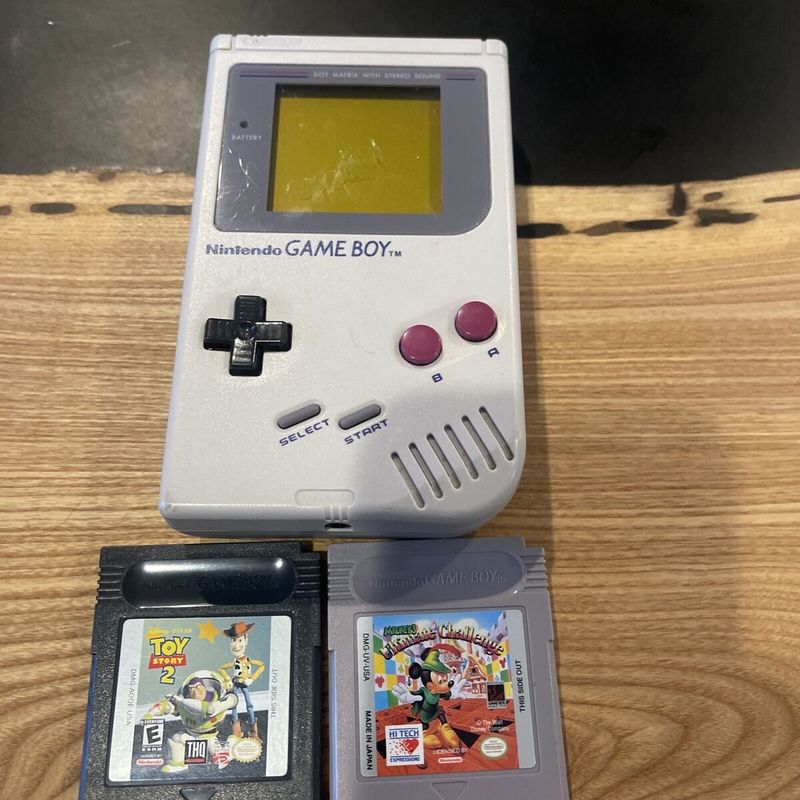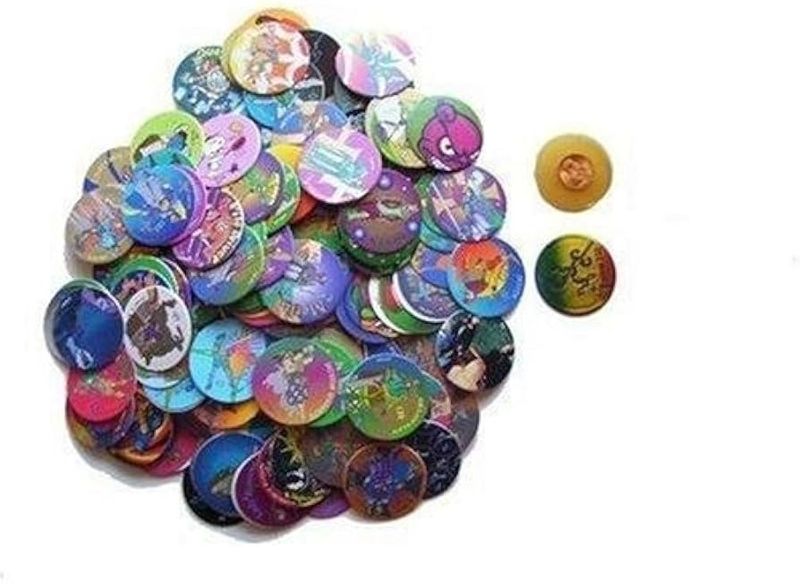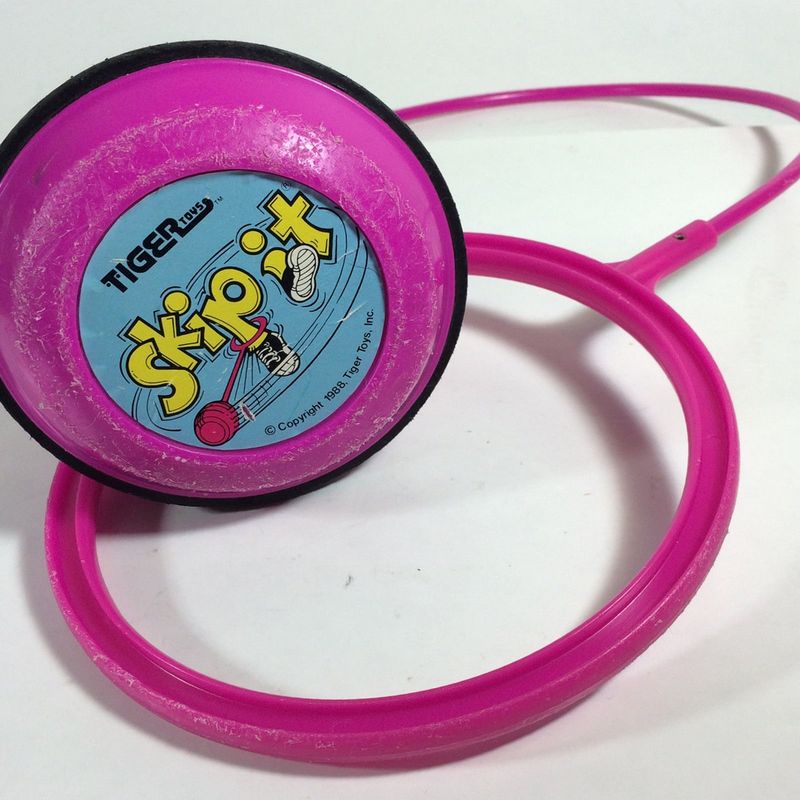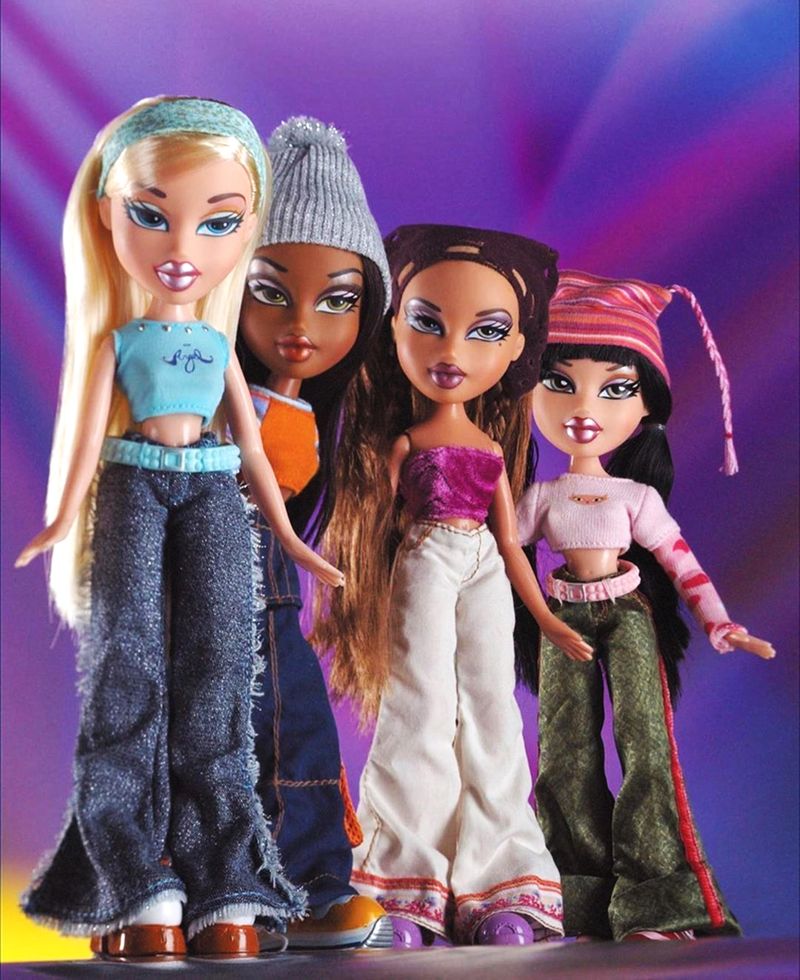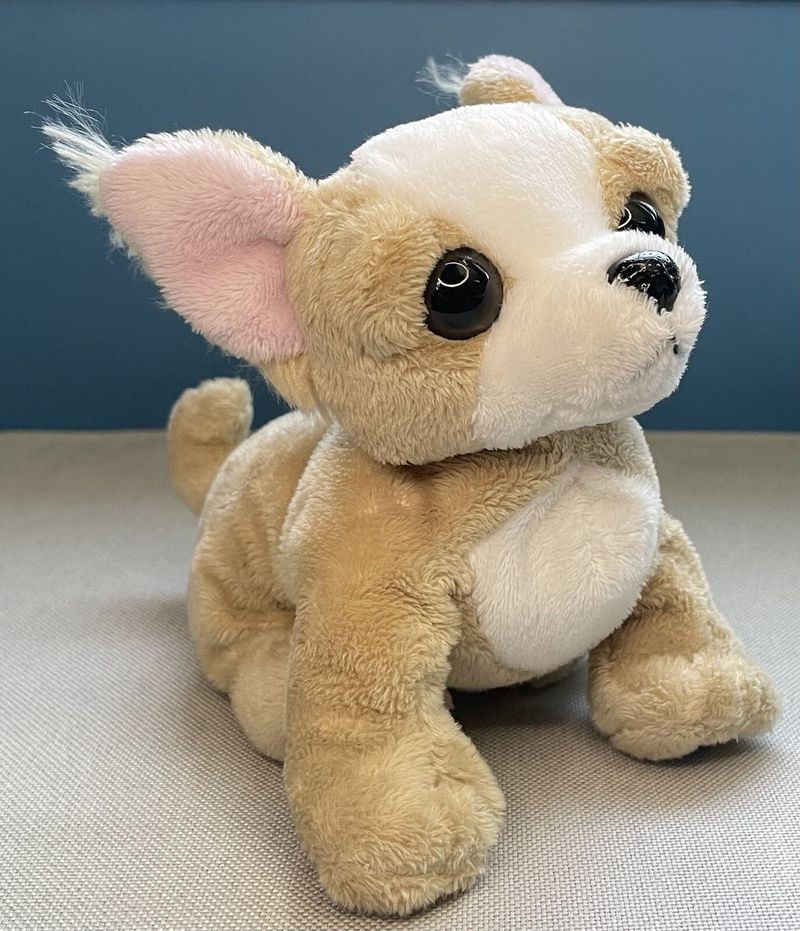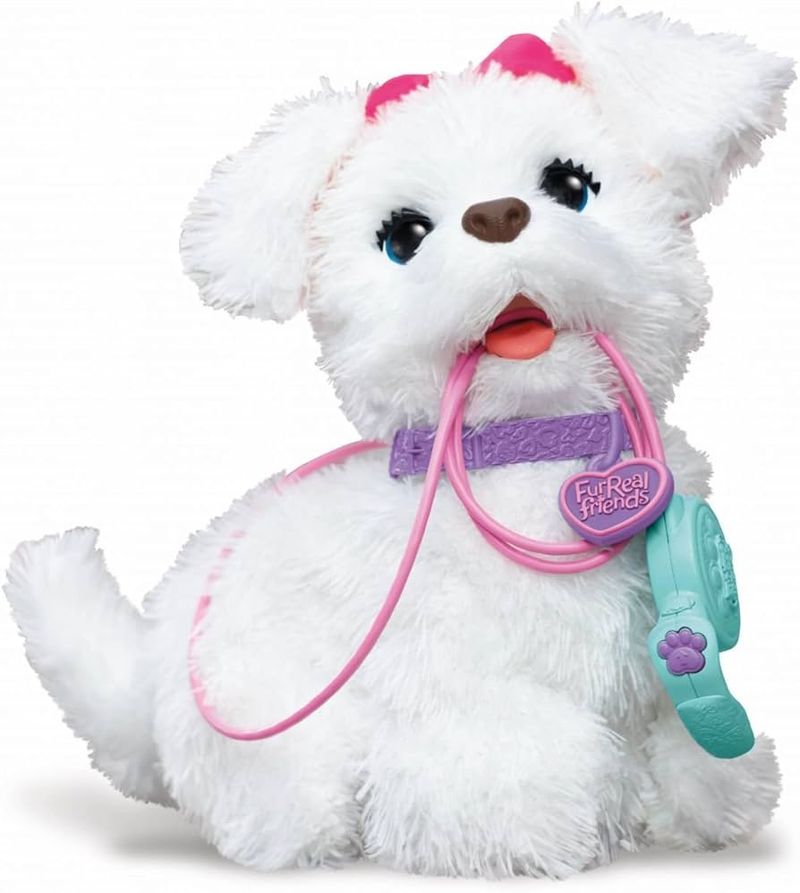Explore the evolution of play with these 30 iconic toys that have captured the hearts of children across generations. From spinning yo-yos of the 1920s to the interactive wonders of the 2000s, each toy holds a special place in the annals of childhood memories.
1. Yo-Yo (1920s)
The 1920s yo-yo, crafted from wood, was a simple yet captivating toy that fascinated children. Its spinning motion, controlled by a flick of the wrist, offered endless entertainment and skill challenges. Kids delighted in mastering tricks like the “walk the dog” or “around the world,” each requiring patience and practice.
Yo-yos became a childhood staple, with playgrounds echoing the rhythmic sound of their spin. Though simple in design, they sparked creativity and fostered competition among friends. The joy of watching a yo-yo return smoothly to its owner’s hand was unparalleled, making it a timeless classic.
2. Slinky (1945)
Slinky, the iconic walking spring, made its debut in 1945 and quickly became a sensation. Invented accidentally by Richard James, this helical toy mesmerized both children and adults with its ability to “walk” down stairs. Its simple yet elegant design allowed it to stretch, flip, and bounce in ways that seemed almost magical.
Kids would gather around staircases, watching in awe as the Slinky moved seamlessly. It was not just a toy; it was a source of wonder and fascination. Slinky’s unique charm lies in its simplicity and the endless possibilities it offered for fun.
3. View-Master (1939)
Introduced in 1939, the View-Master brought three-dimensional images into the palm of your hand. This innovative device used circular reels containing tiny photographs, each offering a glimpse into distant lands, fairy tales, or popular TV shows.
Children would peer through the viewer, clicking the lever to switch scenes, feeling as if they were traveling through time and space. The View-Master provided an escape from the mundane, allowing imaginations to soar. Its popularity spanned generations, becoming a cherished keepsake for many. Exploring new worlds through its lenses was a magical experience.
4. Tinkertoys (1914)
Tinkertoys, first introduced in 1914, were the building blocks of a child’s imagination. These simple construction sets, comprising wooden rods and spools, encouraged creativity and engineering skills in young minds.
Children could design anything from simple shapes to complex structures, each creation a testament to their ingenuity. The tactile nature of Tinkertoys made them a favorite for hands-on play. Families spent hours together, building and bonding over shared projects. Assembling Tinkertoys was not just play; it was a learning experience, fostering problem-solving abilities and spatial awareness.
5. Radio Flyer Wagon (1930s)
In the 1930s, the Radio Flyer wagon became synonymous with childhood adventure. This iconic little red wagon, crafted from steel, was more than just a toy; it was a vehicle for imagination. Children filled it with dolls, action figures, or even their siblings, embarking on endless journeys around their neighborhood.
The sturdy design and smooth wheels made it perfect for transporting treasures or simply enjoying a ride. Families cherished the Radio Flyer, passing it down through generations. Its vibrant red color and timeless design continue to evoke nostalgia and the spirit of play.
6. Hula Hoop (1958)
The Hula Hoop, a simple plastic ring, twirled its way into hearts in 1958, sparking a worldwide craze. Its rhythmic gyration around the waist, hips, or neck became a playful challenge for kids and adults alike.
Hula Hoops were not just toys; they were exercise tools and dance partners. Competitions emerged, with enthusiasts mastering tricks and extended spins. Their popularity soared at home, on playgrounds, and at parties. The Hula Hoop’s infectious energy and vibrant colors made it a symbol of fun and fitness, leaving a lasting legacy in toy history.
7. Barbie (1959)
Barbie, launched in 1959, revolutionized playtime with her fashion-forward style. Unlike any doll before her, Barbie offered an aspirational glimpse into adulthood with her diverse careers and glamorous wardrobe.
Children indulged in creating elaborate narratives, dressing her up for countless adventures. She became a canvas for imagination, reflecting societal changes over the decades. Barbie encouraged young minds to dream beyond traditional roles, embodying empowerment and creativity. Her timeless appeal transcends generations, making her not just a toy, but an icon of culture and fashion.
8. Etch A Sketch (1960)
The Etch A Sketch, introduced in 1960, transformed drawing into a mechanical marvel. With its iconic red frame and two white knobs, it allowed budding artists to create intricate designs by manipulating an internal stylus.
Drawings appeared like magic, only to be erased with a shake, inviting endless creativity. It was a beloved companion on long car rides and rainy days, fostering patience and precision. Etch A Sketch became more than just a toy; it was a tool for artistic expression, challenging users to master the art of line drawing.
9. G.I. Joe (1964)
G.I. Joe, introduced in 1964, redefined play for boys with the concept of the “action figure.” Unlike static dolls, G.I. Joe figures boasted realistic poses and detailed uniforms, engaging young minds in imaginative military adventures.
These figures inspired elaborate scenarios, from daring rescues to epic battles. G.I. Joe’s introduction marked a shift in the toy industry, emphasizing action and adventure. It encouraged storytelling and role-playing, making every play session an epic mission. The legacy of G.I. Joe endures, symbolizing courage and the spirit of heroism.
10. Easy-Bake Oven (1963)
Introduced in 1963, the Easy-Bake Oven was a dream come true for aspiring young bakers. This miniature kitchen appliance, powered by a lightbulb, allowed children to bake their own tiny treats, from cakes to cookies, with ease.
Its charming design and promise of delicious snacks made it a must-have toy, fostering culinary creativity. Kids relished the independence of making their own desserts, often hosting pretend tea parties or sharing their creations with family. The Easy-Bake Oven was more than just a toy; it was an introduction to the joys of cooking and baking.
11. Stretch Armstrong (1976)
Stretch Armstrong, the gooey action figure from 1976, was every kid’s dream of indestructible play. Known for its remarkable elasticity, this toy could be pulled, twisted, and stretched to outrageous lengths, always returning to its original shape.
Children were fascinated by Stretch’s resilience, testing the limits of his stretchability and inventing endless scenarios. His flexible form made him a unique play companion, sparking creativity and laughter. Stretch Armstrong’s ability to withstand rough play made him a favorite among adventurous kids, turning every stretch into an epic feat of fun.
12. Lite-Brite (1967)
Lite-Brite, although introduced in 1967, found its stride in the 1970s as a favorite for creative expression. This pegboard toy allowed children to create glowing pictures by inserting colored pegs into a black board, each lit from behind by a bulb.
Kids delighted in crafting vibrant designs, from simple patterns to complex images, often inspired by the templates provided. The joy of seeing their artwork come to life in radiant colors was unmatched. Lite-Brite encouraged artistic exploration, making it a beloved tool for imaginative play and creativity.
13. Rubik’s Cube (1974)
The Rubik’s Cube, a 1974 invention, became an addictive challenge for puzzle enthusiasts worldwide. This colorful, twisting cube presented a seemingly simple task: align all sides into solid colors. Yet, it quickly revealed itself as a complex and frustrating puzzle.
Solvers spent hours deciphering its mystery, developing strategies and algorithms to conquer it. The Rubik’s Cube wasn’t just a toy; it was a mental exercise, promoting problem-solving skills and patience. Its enduring appeal lies in its simplicity and complexity, making it a timeless test of logic and perseverance.
14. Sit ‘n Spin (1974)
The Sit ‘n Spin, a must-have ride-on toy of 1974, offered dizzying fun for energetic toddlers. By grasping the central wheel and propelling themselves around, children experienced a whirl of excitement and giggles.
This simple yet delightful toy encouraged physical activity while enhancing coordination and balance. The thrill of spinning freely was unparalleled, making it a staple in playrooms and parks. Sit ‘n Spin provided endless entertainment, allowing kids to enjoy movement and motion in a safe and playful manner, transforming ordinary days into spinning adventures.
15. Weebles (1971)
Weebles, introduced in 1971, charmed children with their wobbling antics and catchy slogan: “Weebles wobble, but they don’t fall down.” These egg-shaped figures, weighted at the bottom, fascinated kids with their ability to right themselves after every tip.
A wide range of characters and playsets allowed for imaginative storytelling and creative play. Weebles became a symbol of resilience and balance, their playful nature bringing joy to many. They were more than just toys; they embodied the idea that no matter how much you wobble, you always get back up.
16. Cabbage Patch Kids (1983)
Cabbage Patch Kids, launched in 1983, became a phenomenon, sparking a frenzy that saw parents camping out and fighting in stores to secure one. Each doll, uniquely crafted with its own adoption papers, captured the hearts of children and collectors alike.
Their soft bodies and distinctive faces made them lovable companions, and the adoption concept added an emotional connection. Cabbage Patch Kids were more than just dolls; they represented individuality and the joy of caring for a new friend. Their enduring popularity speaks to the deep nostalgia they evoke.
17. Transformers (1984)
Transformers, debuting in 1984, captivated imaginations with their dual identities. These action figures, capable of morphing from vehicles to robots, offered a dynamic play experience unique to their time.
Children were enthralled by the intricate transformations, engaging in epic battles of good versus evil. Each Transformer had a personality, adding depth to play narratives. The thrill of “more than meets the eye” made every session an adventure. Transformers influenced pop culture, spawning TV shows and movies, solidifying their place in toy history as legendary figures of imagination and innovation.
18. My Little Pony (1983)
My Little Pony, introduced in 1983, enchanted children with its colorful, collectible ponies. Each character, adorned with unique symbols and personalities, inspired imaginative play and storytelling.
Children immersed themselves in Ponyland, creating adventures and friendships among the ponies. The vibrant colors and distinctive features of each pony allowed for personalization and creativity. My Little Pony wasn’t just a toy; it was a world of magic and wonder, where every pony had a story to tell and a friendship to share. Its legacy endures, beloved by new generations.
19. Teddy Ruxpin (1985)
Teddy Ruxpin, introduced in 1985, brought storytelling to life with his animatronic charm. This cuddly bear, equipped with a cassette player, narrated tales that captivated young audiences.
Children would gather around Teddy, mesmerized by his moving mouth and expressive eyes, making storytime a magical event. Teddy Ruxpin was more than just a toy; he was a companion who sparked imagination and love for stories. His unique ability to blend technology and warmth made him a treasured friend, leaving a lasting impression on those who listened to his tales.
20. Nintendo Entertainment System (NES) (1985)
The Nintendo Entertainment System (NES), released in 1985, reignited the gaming industry, introducing unforgettable titles like Super Mario Bros. and The Legend of Zelda. This console brought video gaming into living rooms worldwide, captivating players with its engaging graphics and immersive gameplay.
Families gathered to conquer levels and challenge each other, bonding over shared victories and defeats. The NES marked a turning point in digital entertainment, setting the standard for future consoles. Its impact on gaming culture is profound, making it a cherished icon of ’80s nostalgia and innovation.
21. Game Boy (1989)
The Game Boy, launched in 1989, revolutionized gaming with its portable design. This handheld device allowed players to enjoy their favorite games, such as Tetris and Pokémon, on the go.
Its monochrome screen and compact size made it a constant companion for gamers, turning long car rides and waiting rooms into gaming hotspots. The Game Boy’s success lay in its simplicity and endless entertainment options, fostering a generation of gamers. It was a pivotal moment in gaming history, making playtime accessible anywhere and sparking a mobile gaming revolution.
22. Pogs (1990s)
Pogs, the 1990s collectible craze, turned milk caps into a competitive playground phenomenon. Each Pog, adorned with vibrant designs, became a coveted item for trading and playing.
The game involved stacking Pogs and using a heavier “slammer” to flip them, rewarding skill and strategy. Pogs encouraged social interaction and collection, with children eagerly seeking rare designs to complete their sets. Their simplicity and accessibility made Pogs a favorite pastime, leaving a lasting impression on those who participated in the playful battles of wit and chance.
23. Talkboy (1992)
Talkboy, made famous by its appearance in Home Alone 2, became a must-have gadget in 1992. This handheld cassette recorder/player allowed kids to capture and replay their voice, adding a playful twist with adjustable playback speeds.
Children delighted in creating fun messages, pranks, and mock interviews, exploring their creativity and humor. Talkboy’s association with the popular movie added to its allure, making it a symbol of ’90s pop culture. It wasn’t just a toy; it was a tool for imagination, offering endless entertainment and laughter.
24. Skip-It (1990)
Skip-It, a beloved playground toy of the 1990s, combined physical activity with fun. Worn around the ankle, it encouraged kids to keep the attached ball and counter spinning through continuous jumps.
The challenge of breaking personal records and the joy of movement made Skip-It a favorite among energetic children. Its simple design and engaging gameplay promoted fitness and coordination. Skip-It brought excitement to recess and neighborhood play, encouraging healthy competition and active play. It was more than a toy; it was a catalyst for joyful exercise.
25. Tamagotchi (1996)
Tamagotchi, the digital pet sensation of 1996, tasked children with nurturing a virtual creature. This handheld device required constant attention, teaching responsibility as kids fed, cleaned, and played with their pixelated pets.
The bond formed with these digital companions was profound, with their well-being dependent on the owner’s care. Tamagotchis became a worldwide obsession, with playground conversations dominated by pet progress and care strategies. This innovative toy was more than a gadget; it was an introduction to digital interaction and the joys of virtual companionship.
26. Razor Scooter (2000)
The Razor Scooter, debuting in 2000, became the must-have ride of the decade. With its sleek aluminum frame and foldable design, it offered convenience and style in one package.
Children and teens embraced the scooter for its speed and agility, turning sidewalks into fast-paced playgrounds. The Razor Scooter wasn’t just a toy; it was a revolution in personal transport, encouraging outdoor play and exploration. Its popularity soared, making it a staple of 2000s culture, and leaving a lasting impression as a symbol of freedom and adventure.
27. Bratz Dolls (2001)
Bratz Dolls, introduced in 2001, brought a fresh, edgy twist to the doll market. Known for their bold makeup and trendy fashion, they became instant icons of style and individuality.
Each doll had a unique personality, encouraging children to explore diverse fashion choices and narratives. Bratz Dolls challenged the traditional norms of beauty and play, promoting self-expression and creativity. Their impact on the toy industry was significant, offering a modern alternative to classic fashion dolls, and inspiring a generation to embrace their unique identities.
28. Nintendo Wii (2006)
The Nintendo Wii, launched in 2006, revolutionized gaming with its motion-controlled gameplay. This console broke barriers, inviting players of all ages to engage in interactive experiences that combined physical activity with digital fun.
Games like Wii Sports encouraged family bonding, transforming living rooms into bowling alleys and tennis courts. The Wii’s intuitive controls made gaming accessible and inclusive, redefining entertainment. Its innovative approach fostered a new era of social gaming, making it a beloved staple in households worldwide and a pivotal moment in gaming history.
29. Webkinz (2005)
Webkinz, introduced in 2005, combined plush toys with a digital universe. Each cuddly Webkinz had a unique code, unlocking a virtual world where children could care for and interact with their pets online.
This innovative concept bridged physical and digital play, offering endless activities and learning opportunities. Webkinz captivated children’s imaginations, encouraging creativity and responsibility in a safe, engaging environment. The ability to personalize and nurture their virtual pets made Webkinz a cherished part of playtime, influencing the way children interacted with technology and toys.
30. FurReal Friends (2002–)
FurReal Friends, launched in 2002, brought robotic pets to life with realistic movements and sounds. These interactive companions offered children the joy of caring for lifelike animals, without the responsibilities of real pets.
FurReal Friends responded to touch and voice, engaging children in playful and nurturing activities. Their life-like presence and adorable designs made them beloved by many, fostering empathy and imagination. These robotic pets were more than toys; they were companions that bridged technology and affection, providing endless joy and comfort to young hearts.

